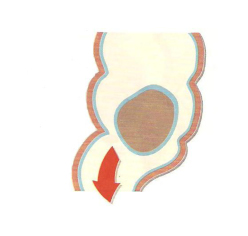ANTI-CELLULITE
AROMABELLA MASSAGE OILS
DEPILATORY (HAIR REMOVAL) PRODUCTS
DISPOSABLE PRODUCTS
HEALTH PROBLEMS
MADEROTHERAPY
NATURAL COSMETICS
PRODUCTS FOR BEAUTY TREATMENTS
Urinary system
Digestive system
Rheumatic pain
Aromabella massage oils 500 ml
Aromabella massage oils 3000 ml
Phyto cosmetics
Dora cosmetics
Maderotherapy rollers for body
Maderotherapy rollers for face
Special offers
Gels and oils
Body wraps
PROMO SETS
Liposoluble waxes in jars
Liposoluble waxes - discs and pearls
Sugar pastes
Pre/after epilation products
Accessories and disposables
Devices
Peeling
How laxatives work?
Constipation is a disorder of intestinal motility and stool or no (constipation) or very difficult exits - a hard stool (constipation).
 Constipation (constipation) can be avoided by proper diet and a natural laxative that helps prevent complications that arise due to insufficient and irregular defecation.
Constipation (constipation) can be avoided by proper diet and a natural laxative that helps prevent complications that arise due to insufficient and irregular defecation.
Laxatives (cleaning) promotes bowel movements, and the mode of action are distinguished:
Funds swell - attracts water and therefore increase the volume of multiple chairs. It acts on nerve endings in the colon causing intestinal motility and movement of the chair. Until the desired effect may take up to 1 day. In this way, act:
- fibrous substances
- figs
- plums
- linseed
- seed plantain
- bran
- cereal products (insoluble polysaccharides)
These preparations are effective for mild forms of constipation. With the use of such preparations should consume plenty of fluids because of the possibility of agglomeration chairs. In the application of fibrous materials, flax seed and bran may appear undesirable effects such as bloating intestines (flatulence) and a feeling of heaviness in the stomach.
Good compatibility allows use of mild laksansa (figs, prunes) in pregnant women, infants, nursing mothers and elderly people.
Agents which act osmotically - osmotic effect means that the water diffuses in a place where there is a lesser concentration to establish equilibrium. When entering hipertonic solution water diffuses into the intestine, thus increasing the volume of the stool, making stools softer.
- sugar (milk sugar lactose)
- sugar alcohols (lactulose, sorbitol)
- honey
- various salts (saline means)
Sugar and sugar alcohols are considered as safe means of opening the osmotic effect. The disadvantage is that they can cause distension (meteorism) and dehydration. People with lactose-intolerance should avoid sugar and sugar alcohols.

Hidragogi – act by inhibiting the absorption of sodium ions and water from the intestine into the bloodstream, and also support the influx of electrolytes and water in the cavity of the intestine. This increases the volume of stool and make it softer. This includes herbal laxatives primarily:
- castor oil
- anthraquinone glycosides (aloe, buckthorn bark, senna leaf, senna fruit, rhubarb root)
-
synthetic laxatives (phenolphthalein, bisakodil, On-pikosulfat)
The effect of these preparations occurs approximately 10-12 hours after administration, and the sodium-pikosulfata 4-8 hours. The best time for taking these products the evening before bed, so you drive the bowel occurs next morning. Cleaning agents should be dosed so that stool is in order and formed 2-3 days.

Laxatives that stimulate bowel motility – regulate bowel movements causing the negative side of these agents that can suppress the natural reflex of the intestine. These include anthraquinone aloe, buckthorn and senna. In a roundabout way of acting and other means, such as lactulose.
Larger doses antrakinonskih glycoside causing painful peristalsis of the colon. Cause pelvic hyperemia and thus can cause undesirable gynecological bleeding. Therefore they should not be used during pregnancy.

Different resources – Here are resources that act specifically to release in the colon of CO2 gas. Here are resources that act Specifically this release in the colon of CO2 gas. Klistri that does not cause habituation of the solution with active ingredients that act osmotically or contain slippery, oily agents. Such an effect can be achieved and klistriranjem hot water.




.png)